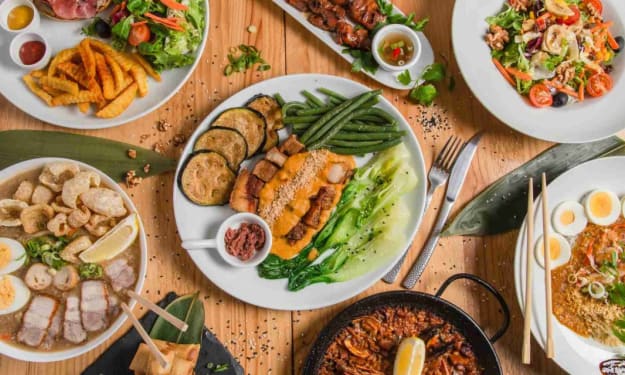Why are Apples Available in so Many Varieties?
Why do apples come in such a wide variety of options?

Have you ever entered a supermarket and wondered where all the different varieties of apples originated? Along with Red Delicious and Granny Smith, less well-known varieties, including Snap Dragon, Pixie Crunch, Cosmic Crisp, Jazz, and Ambrosia may also be present. So why are there so many different kinds? Theresa Doud provided my research on this topic with a thorough explanation of the apple breeding process.
Have you ever entered a grocery store and wondered where all those different varieties of apples originated? Along with Red Delicious and Granny Smith, less well-known varieties, including Snap Dragon, Pixie Crunch, Cosmic Crisp, Jazz, and Ambrosia, may also be present. There are over 7,500 different apple types in the world, but only a small number have names that are so deliciously descriptive.
The endeavors of humans to produce new results are largely responsible for this enormous diversity. Fruit breeding is a way to meet the demands of growers and customers who want particular characteristics in an apple. Farmers may, on the one hand, desire that they be disease-resistant and have good storage qualities. On the other hand, innovation, flavor, and appearance are factors that affect customers. Therefore, breeders must take into account everything from an apple's color, flavor, and size to how well it grows in various regions.
In some cases, breeding something new is necessary to find the ideal fit. Breeders must first identify parent apples with the desired traits in order to produce apples with those traits. Once the parents have been chosen, they must wait until the spring, when the trees bloom. Cross-pollination is the procedure by which the breeder manually transfers pollen from one bloom, known as the father, to the other parent bloom, known as the mother. The seeds are gathered and then sown after the mother bloom develops into an apple. These seeds take around five years to develop into apple-producing trees, but due to the way qualities are inherited, every seedling will have a unique collection of genes and attributes. This implies that a breeder must be patient in addition to producing a large number of offspring in order to obtain the desired quality.
A seedling is chosen for further analysis when it produces fruit with the necessary characteristics. Only one in every 5,000 of the original crossing seedlings reach this esteemed level. After that, they are transferred to new farms so that breeders can see how different soils and climates affect the development of the plants. Then, in order to guarantee consistency, the fruit of the seedling and all of its clones must be collected and sampled.
Breeders study about 45 aspects of an apple, such as its firmness and texture, when it ripens, the sweetness of its juice, and how long it keeps fresh. There are about 45 characteristics of an apple, including its texture and firmness, when it ripens, the sweetness of its juice, and how these distinctive plants are formally responsible for creating the cultivar, or new apple variety.
Breeders over a number of years, choosing just those whose fruits are the best. These distinctive plants are formally responsible for creating the cultivar, or variety. All apple trees must be grafted from the original seedling in order to guarantee an exact replica of this variety. To produce new scion wood, branches from the original tree are cut and allowed to grow. The lower section of another tree, selected from a different cultivar for its superior roots and growing capacity, is grafted with segments of these trees. The result of this fusion is a new apple tree with the desired characteristics.
It can take up to four years for a young plant to begin producing the fruit we eat. Apple breeding may be a challenging art, but anybody can participate: institutions of higher learning, businesses, and even people can develop new cultivars. But before the breeder can truly claim an apple, they must name it. A breeder selects a name for a cultivar's trademark when it is granted patent protection. They are given permanent ownership rights over the apple and its clones after that last phase.
The more memorable the name, of course, and it must be entirely original. That is why we have apples with names like Pink Lady, Sweet Tango, Kiku, and Ever Crisp, among more than 7,500 more variations. These names will get more inventive and delicious as we use nature's bounty to develop new varieties.
About the Creator
Althea March
I am a writer who searches for facts to create compelling nonfictional accounts about our everyday lives as human beings, and I am an avid writer involved in creating short fictional stories that help to stir the imagination for anyone.






Comments
There are no comments for this story
Be the first to respond and start the conversation.